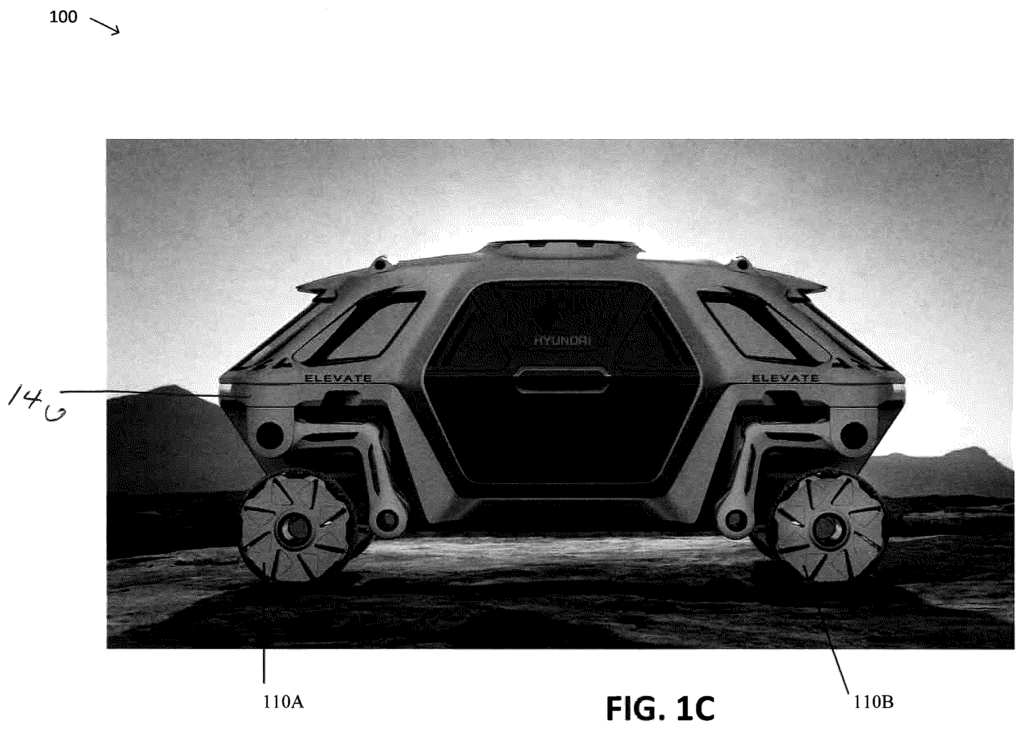Hyundai Elevate Walking Car is robotics and automotive architecture to produce a vehicle that can travel difficult terrain that is inaccessible to regular cars. More recently, Hyundai announced that it’s going to accelerate the development of the project known as “Elevate” with the hope of transforming mobility for regular users and first responders alike. The design of this vehicle is significantly different from other cars, as it not only moves on wheels but also uses them like legs to climb difficult terrains. This vehicle is designed to assist people in emergency situations like earthquakes, which traditional vehicles cannot reach.

How does Hyundai Elevate Walking Car Function?
- Leg-Wheel Combination: The vehicle can switch between rolling on wheels and walking on retractable robotic legs, providing versatility for different environments.
- Multi-Directional Movement: Each leg has a multi-jointed facility for omnidirectional movements to overcome obstacles and cross rough ground areas.
- Terrain Adaptation: This is designed for those areas where no conventional vehicle can reach-standard rough terrain, disaster areas, steep inclines, or other such environmental hazards.
- Rescue and Exploration: The vehicle is suited for emergency response missions, offering enhanced mobility in challenging conditions.
- Robotic Flexibility: The legs are designed in such a way that allows extension, retraction, and even bendability, which makes it possible for the vehicle to change its height, step across gaps, or even crawl under obstacles.
- Modular Design: The car’s structure allows for customization, making it adaptable for various uses, from rescue missions to personal transport.
Patents Description:
We’ve analyzed key patents related to the Hyundai Elevate Walking Car. Read the summary below and discover the ingenious innovations behind this breakthrough technology!
- US20240025304A1 patent describes a system that enhances vehicle stability by adjusting the height of each wheel based on terrain conditions. Sensors detect uneven surfaces, and the suspension automatically adapts, ensuring a smoother and safer ride on rough terrain. This solves the problem of instability and discomfort when driving over bumpy surfaces, improving both safety and performance.
- US20230211842A1 patent describes a system that enhances autonomous driving by using sensors to monitor the environment and adjust speed and direction in real-time. It solves the problem of safely navigating complex environments, ensuring efficient and obstacle-free movement for autonomous vehicles.
- US20230211841A1 patent describes a system that optimizes battery usage in electric vehicles by adjusting power distribution based on driving conditions. This improves energy efficiency, extends driving range, and reduces the need for frequent charging.
How does Hyundai Elevate Walking Car compare to its competitors?
- Toyota i-ROAD: While Toyota’s i-ROAD is designed to be compact, three-wheeled transportation, without the advanced leg-wheel hybrid system that makes Hyundai’s Elevate Walking Car so unique, it has some limitations in its travel over rough and uneven terrain.
- General Motors Autonomous Off-Road Vehicle: GM’s off-road vehicle is for harscapes but does not feature Hyundai’s Elevate Walking Car with its unique multidirectional robotic legs.
Hyundai’s Elevate Walking Car identifies itself with an innovative leg-wheel system at its core, combining robotic flexibility with vehicle functionality. Along with greatly increasing mobility across diverse environmental contexts, such a design will be truly revolutionary for both rescue and daily use cases in the future of transportation. The Hyundai Elevate Walking Car is a way we will rethink how we take to challenging terrains; it will surely stand at the leading edge in its attempt to redefine capabilities and applications of vehicles.
Need to know anything else? We got you covered!




